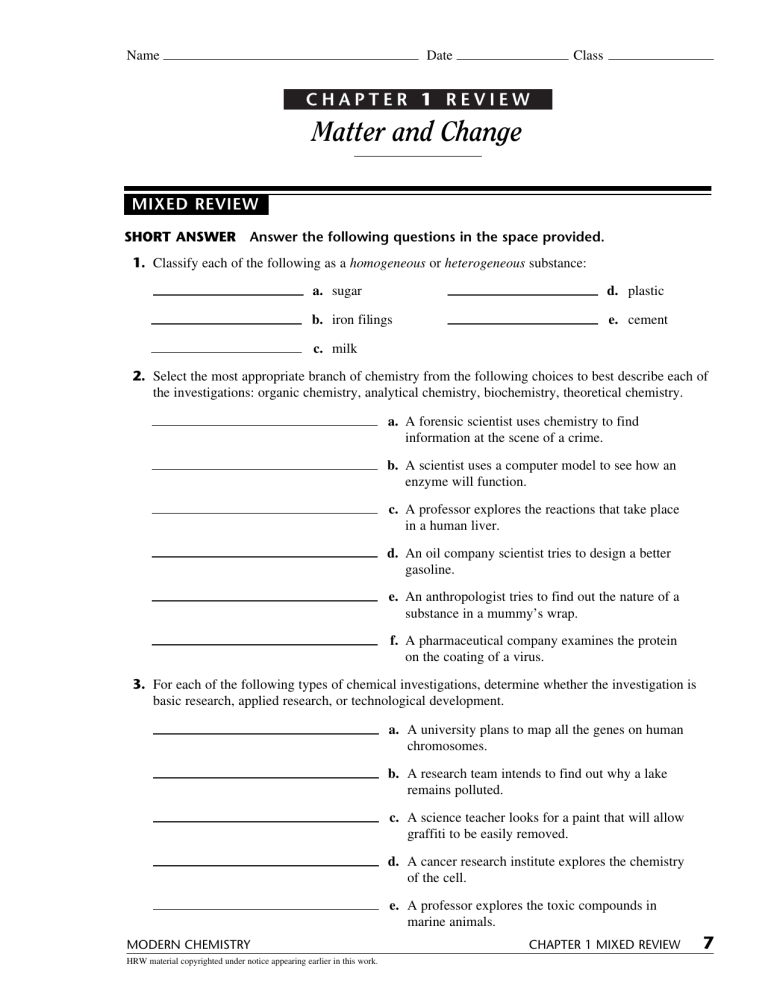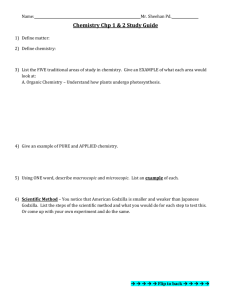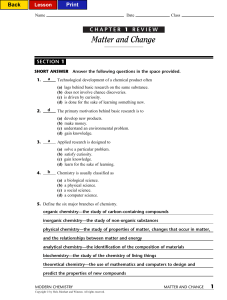
Name Date Class CHAPTER 1 REVIEW Matter and Change MIXED REVIEW SHORT ANSWER Answer the following questions in the space provided. 1. Classify each of the following as a homogeneous or heterogeneous substance: a. sugar d. plastic b. iron filings e. cement c. milk 2. Select the most appropriate branch of chemistry from the following choices to best describe each of the investigations: organic chemistry, analytical chemistry, biochemistry, theoretical chemistry. a. A forensic scientist uses chemistry to find information at the scene of a crime. b. A scientist uses a computer model to see how an enzyme will function. c. A professor explores the reactions that take place in a human liver. d. An oil company scientist tries to design a better gasoline. e. An anthropologist tries to find out the nature of a substance in a mummy’s wrap. f. A pharmaceutical company examines the protein on the coating of a virus. 3. For each of the following types of chemical investigations, determine whether the investigation is basic research, applied research, or technological development. a. A university plans to map all the genes on human chromosomes. b. A research team intends to find out why a lake remains polluted. c. A science teacher looks for a paint that will allow graffiti to be easily removed. d. A cancer research institute explores the chemistry of the cell. e. A professor explores the toxic compounds in marine animals. MODERN CHEMISTRY HRW material copyrighted under notice appearing earlier in this work. CHAPTER 1 MIXED REVIEW 7 Name Date Class MIXED REVIEW continued 4. Use the periodic table to identify the name, group number, and period number of the following elements: a. Cl b. Mg c. W d. Fe e. Sn 5. What is the difference between extensive and intensive properties? 6. Consider the burning of gasoline and the evaporation of gasoline. Which process represents a chemical change and which represents a physical change? Give a reason for your answer. 7. Describe the difference between a heterogeneous mixture and a homogeneous mixture, and give an example of each. 8. Construct a concept map that includes the following terms: atom, element, compound, pure substance, mixture, homogeneous, and heterogeneous. 8 CHAPTER 1 MIXED REVIEW MODERN CHEMISTRY HRW material copyrighted under notice appearing earlier in this work.





